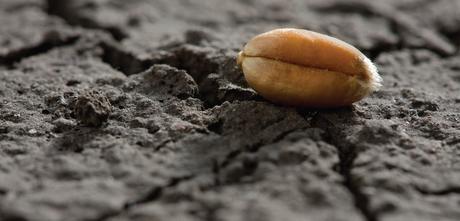
For 50 years, cancer was considered to be caused primarily by genetic mutations. This line of thinking got us almost exactly nowhere. As the research began to repudiate the main tenets of the Somatic Mutation Theory (SMT) of Cancer, competing hypotheses gained attention. The SMT's main premise was that cancer is derived from a single somatic cells that has accumulated a bunch of genetic mutations that allow it to become immortal. The main cancer-causing genes are termed onco-genes and tumor suppressor genes.
This is a classic case of not seeing the forest for the trees. What does this mean? Well, imagine yourself stuck in the middle of a forest. All you see are trees. It doesn't seem so great. It's just a bunch of trees like you find in your backyard. Here's a tree. Here's another tree. Here's a third tree. What's the big deal? But, if you could see the Amazon rainforest from a helicopter, you could then appreciate the beauty of the entire forest.

Zooming in too far
We have thousands of blind researchers and cancer. Each sees a tiny, tiny piece of the puzzle and can't see the whole.
The same problem exists in the SMT. We've zoomed into cancer too closely - right down to the genetic makeup of the cancer and it is gibberish. We can make no head or tail of cancer's origin and therefore make no progress towards treatment. Over 100 oncogenes and over 15 tumor-suppressor genes have been identified, but we don't know what it all means as a whole. Instead of three blind men and an elephant, we have thousands of blind researchers and cancer. Each sees a tiny, tiny piece of the puzzle and can't see the whole. The rate of mutation necessary to develop a cancer is far, far more than the known rate of mutation in human cells ( Loeb et al 2001). Normal cells just don't mutate anywhere close to what is needed to produce cancer.Further, while every cancer has mutations, it was not known what the 'denominator' was. That is, how many cells had mutations but no cancer. This turned out to be pretty high. You could alter 4% of the genome and still have a cell that looked and acted completely normally. This is a remarkable high degree of tolerance (Humpherys 2002)
We need to zoom out and look at cancer from a different perspective. The SMT looked at cancer at a microscopic genetic level. The Tissue Organization Field Theory (TOFT) begins to correct the problem by looking at the tissues surrounding the cancer. In multicellular organisms, single cells do not have an existence outside of the whole organism. The liver, for example, could not exist outside of the body. We don't walk down the street and say hi to the next door neighbor's liver out walking the dog. You don't see your spouse's lung jumping out of the body at night to rummage around the refrigerator. You don't yell at your spouse's kidney to put the toilet seat down.
All cells originate from a single fertilized egg, so all cells in the body, including all the different organs share the same genes and DNA. The original undifferentiated stem cells have the ability to become any part of the body - lung, liver, heart etc. It is therefore, not the genes that determine if a cell becomes a liver or a lung, it is the signals received from the surrounding tissues that tell an undifferentiated cell to become a liver cell. There is detailed hormonal signalling involved in this process.
For every problem, including cancer problems may develop in one of two places. There may be a problem with the cell itself - it mutated and became a cancer. Or, it may the environment it grows in that may be telling that cell to become cancerous. Is it the seed or is it the soil or both? If you drop a grass seed in the desert - it does not grow. But drop that same grass seed into your lawn - it may grow extremely well. But it is the exact same seed with exactly the same genes. Focusing exclusively on the seeds means we missed the forest for the trees. Myopically researching the genetic difference of seeds to see why one grows and the other does not is futile.

The 'seed and soil' of cancer
By the same token, a cancer cell may grow very well in the normal environment of growth pathways. But that same cancer cell may not grow at all in the 'desert' where growth pathways have been entirely shut off. The key is to shut off these pathways. How to do that (previously discussed here)? Well growth pathways are closely linked to the body's nutrient sensors. If the body sees that there are no nutrients, then it will shut down all cells to go into a quiescent state, just as baker's yeast will become dormant without water. The reason is self preservation. In this dormant state, it can live essentially forever.
This understanding of the importance of the 'seed and the soil' concept helps to answer one of cancer's most interesting questions. Why can virtually every cell in the body become cancerous? Think about this - there is cancers of the lung, breast, stomach, colon, testicles, uterus, cervix, blood cells, heart, liver, even fetuses. The ability to become cancerous is an INNATE ability of every cell of the body, almost without exception. Sure some cells become cancer more frequently than others. The oncogenes and tumor-suppressor genes discovered so laboriously over the last quarter century are mutations of NORMAL genes. The seed of cancer lies in every single one of our cells. So we must pay more attention to the 'soil' because that is what likely makes the difference between having cancer and being healthy.

The question is why? Why should any cell turn into cancer? Why shouldn't all cells turn into cancer? The origins of cancer lie in our own cells. The capacity to turn into cancer lies in the normal pathways of growth that become somehow perverted - by the environment it lives - the 'soil'. If you bathe lung cells in cigarette smoke, it will more likely turn into cancer. If you infect cervical cells with Human Papilloma Virus, it will more likely turn into cancer. If you give asbestos to the lung lining (pleura), it will more likely turn into cancer. If you are obese, breast cells will more likely turn into cancer. The question of what is the common linkage of all these stimuli?
The SMT assumes that the default state of cell proliferation in humans is quiescence. The liver cell, for example, won't grow unless it receives growth signals to tell it to grow. Therefore the assumed problem in liver cancer is that the 'seed' is bad. But it could just as easily be the 'soil' or the environment surrounding the liver that the will tell it to grow or not.
On the other hand, single-celled organisms are assumed to have a default state of growth. That is, cells grow all the time unless they are constrained by not having enough nutrients. Put a bacteria in a Petri dish and it will keep growing until it runs out of food. From an evolutionary perspective, since we evolved from single celled organism, it would only make sense that all our cells retain this INNATE ability to grow. For example, the replication machinery of yeast and human cells is almost completely homologous. So, if you simply find the right 'soil' any cell may return to its original state of growth. Unregulated, this is almost the very definition of cancer.
The same issue exists for motility. Liver cells, for example, don't move around our body at will. But for unicellular organisms, this is the natural state of things. Yeast will move around constantly. Bacteria are constantly moving. This has enormous implications for why cancers spread (metastasize), which is 90% of the reason people die of cancer. Metstasis, or movement of cells, is an INNATE feature of life on earth.
We've been digging too deeply
Cancer exists at many levels. If we dig too deeply into the genetic level, we miss entirely that the way that cells are organized plays a huge role in cancer's development. If we look too closely at the trees, we miss the forest. If we look too closely at the genetic level, we miss the tissue organization level problems - the growth signals, the nutrient sensors, the hormonal signalling. Cancer cells do not grow faster than normal cells. It's just that normal cells don't normally grow. Also the growth of cancers are not autonomous. Breast cancer cells, for example will still respond to hormone changes like estrogen.
Gleevec, the very poster child of recent cancer breakthroughs illustrates that we have been digging too deeply. Recall that Gleevec, imatinib, is a drug that blocks tyrosine kinase, a growth signal for cells. It can cure many patients from chronic myelogenous leukemia, a disease that is caused by a genetic distortion, the Philadelphia chromosome. But here's the crucial part. Gleevec does not affect the genetics of the cells. It affects the growth signalling pathways - the SOIL, not the SEED. In doing so, it sometimes so completely cures the cancer that the genetic aberrations disappear.
Gleevec, the most successful cancer treatment of the last 50 years, is proof that we had been diving too deeply into the minutiae of the genetic problems and failed to consider the cancer's hormonal environment. This is an example of so called 'preposterous reductionism' ( Dennett, Darwin's dangerous idea). "If you want to know why traffic jams tend to happen at a certain hour every day, you will still be baffled after you have painstakenly reconstructed the steering, braking and accelerating processes of the thousands of drivers whose various trajectories have summed to create those traffic jams."
If you want to know why cancer happens, you will still be baffled after you have painstakenly reconstructed the oncogenes and tumor suppressor genes and other processes of the thousands of cells whose various trajectories have summed to create cancer. This is exactly the track we have taken with almost all of modern cancer research, and we wonder why we've made no progress. After billions of research dollars and decades of time, The Cancer Genome Atlas is the cancer equivalent of reconstruction steering patterns of thousands of cars to see figure out rush-hour traffic.
Zoom out. Look at the proper level (tissue level, not genetic level).
Zoom out. Look at the proper level (tissue level, not genetic level). Consider cancer's soil, not only its seed. This does not invalidate any of the advances of genetics. The changes merely occur at different levels. The SMT looks at cancer at a cell based level, and tissue organization theory looks at the 'society of cells' level. But understand that one does not preclude the other.
